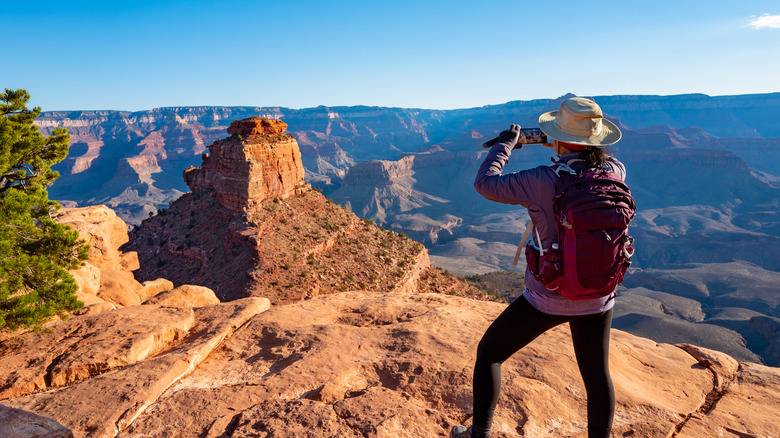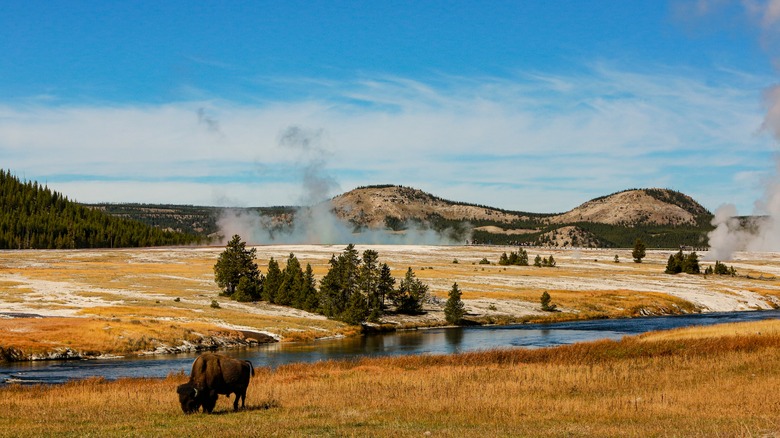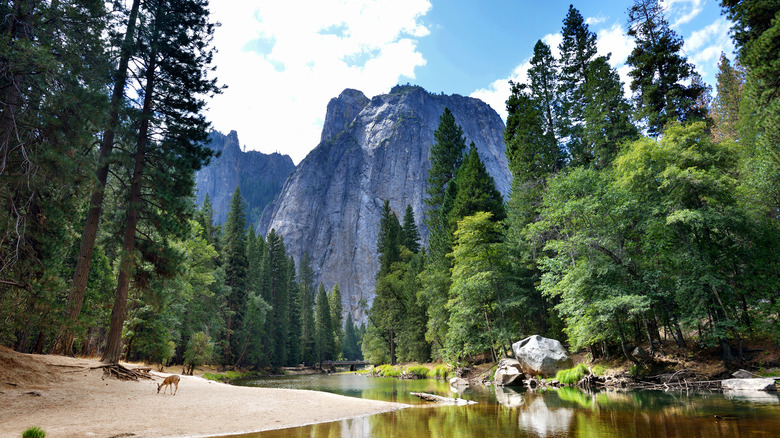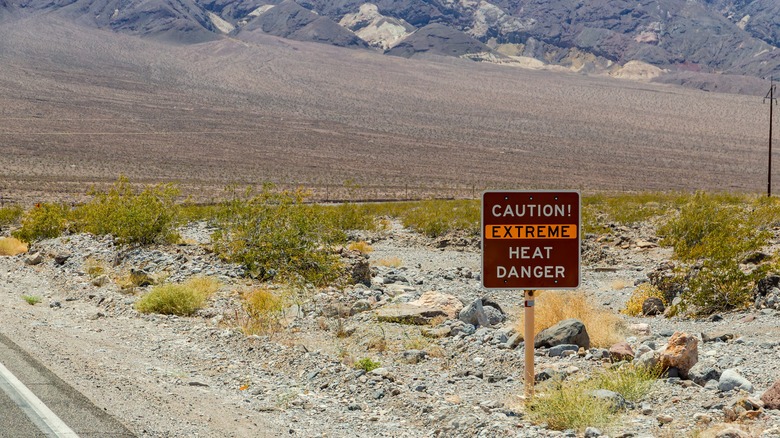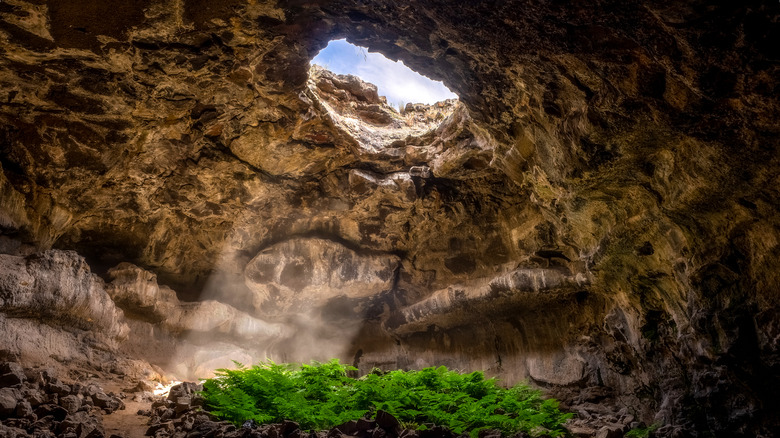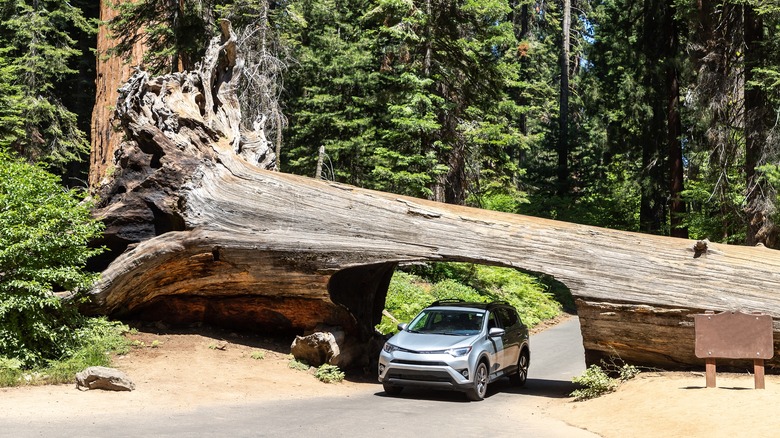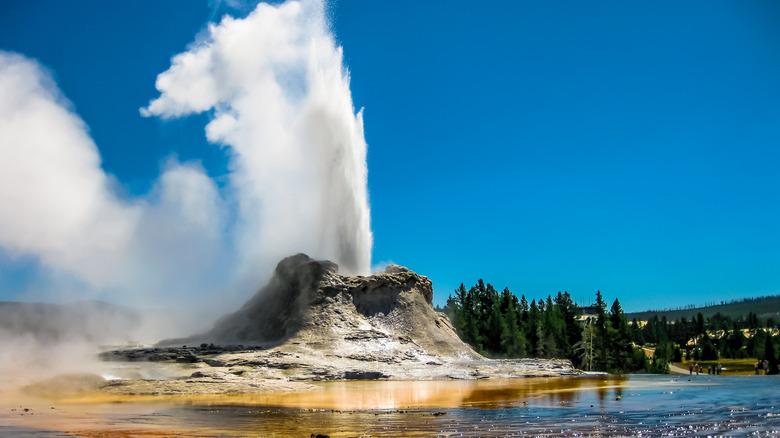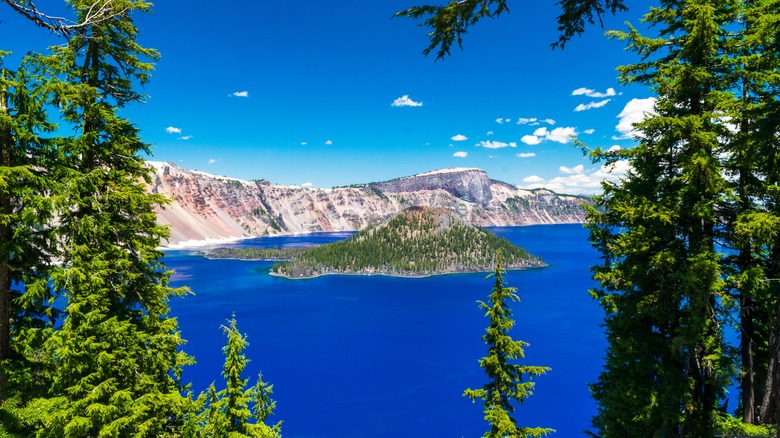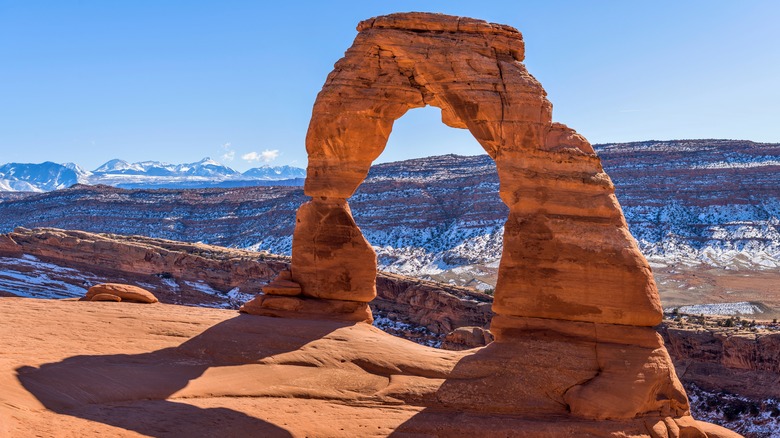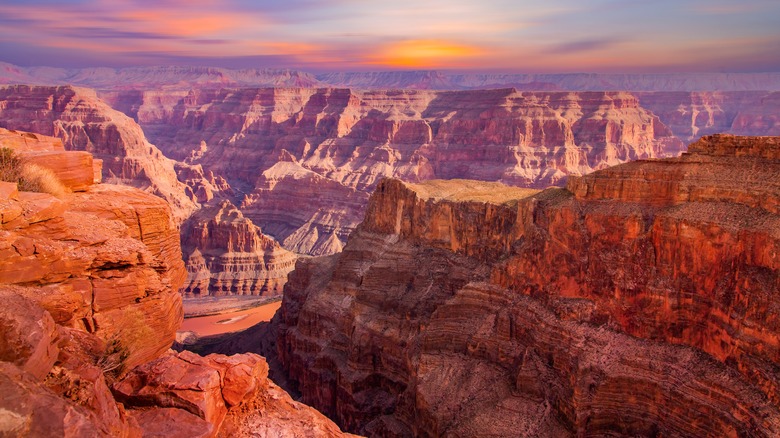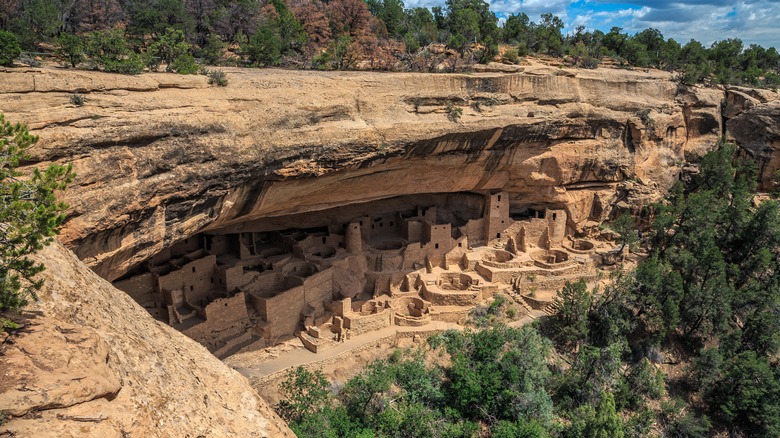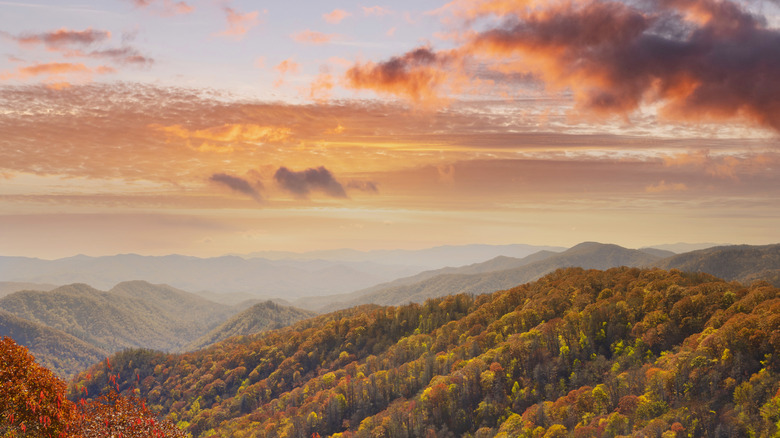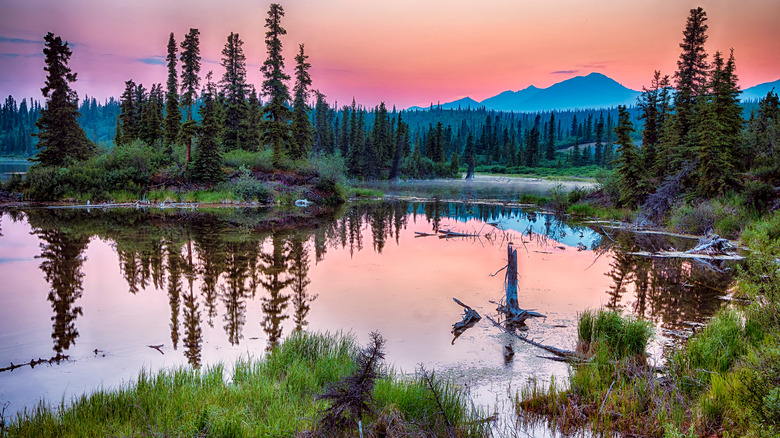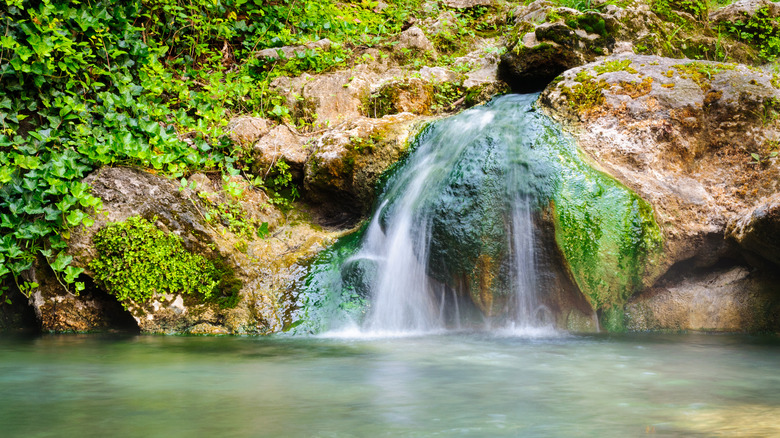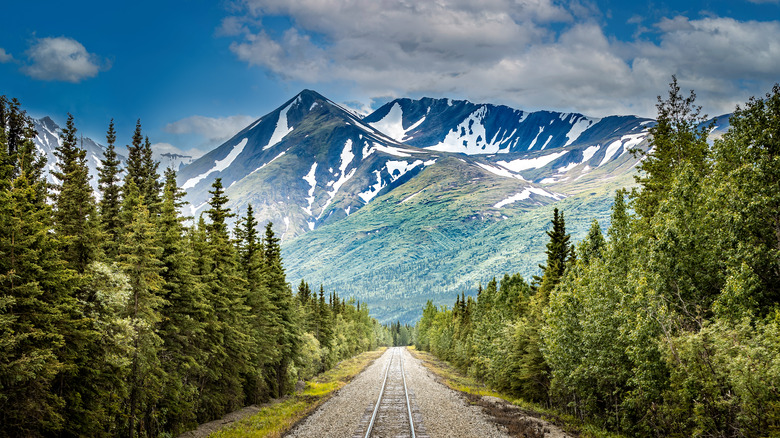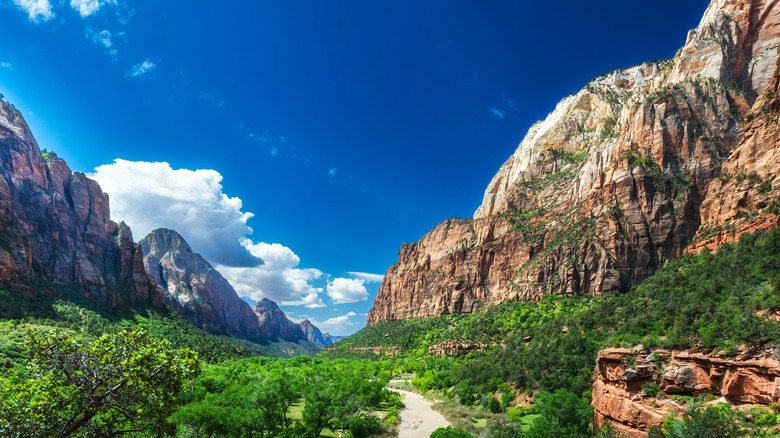15 Facts You Probably Didn't Know About America's National Parks
America's national parks are undoubtedly some of the country's most breathtaking landscapes, drawing in millions of visitors each year to experience Mother Nature's unique vistas. From the towering peaks of Denali National Park to the colorful geothermal wonders of Yellowstone, these protected areas showcase the remarkable and diverse natural beauty that America has to offer.
While many people are familiar with popular parks like Yosemite or the Grand Canyon, a vast array of lesser-known parks deserve just as much recognition. The statistics, historical facts, fascinating stories of each park, and the unprecedented creation of the National Parks Service itself are all worth knowing more about. These interesting facts about America's national parks will shed light on their intriguing history, unique wildlife, and the hidden gems waiting to be discovered in some of the most glorious environments in the U.S.
Yellowstone was the first national park in the world
Yellowstone National Park, located primarily in Wyoming, is widely regarded as the first national park in the world. It holds a special place in history and has served as a model for conservation efforts worldwide. On March 1, 1872, Ulysses S. Grant signed the Yellowstone National Park Protection Act into law after explorers and artists Thomas Moran, Henry Wood Elliot, and William Henry Jackson brought back paintings, photographs, and sketches showcasing the natural beauty of the area's geothermal features, its wide array of wildlife, and stunning mountain ranges.
Prior to Yellowstone's establishment, there were no designated areas dedicated solely to preserving natural landscapes and wildlife, and the idea of creating such an area was revolutionary at that time. Since its inception, more than 100 countries around the world have created nearly 1,200 national parks or preserves based on the original national park, Yellowstone.
The National Park Service Organic Act helped create the National Parks Service
Naturalist John Muir is credited with the creation of what is now the National Park System due to his campaign to protect Yosemite from commercial developments. Muir greatly influenced President Theodore Roosevelt, who took many trips to Yosemite with Muir and is today known as the "conservation president." During his presidency, with the involvement of Muir, Roosevelt doubled the number of national park sites in the U.S.
While Muir died before the creation of the Organic Act, his legacy for conservation continued. On August 25, 1916, President Woodrow Wilson signed the National Park Service Organic Act to create the National Park Service, which would be responsible for protecting the 35 national parks and monuments that had been created prior.
Today, the National Park Service protects over 85 million acres in all 50 states, the District of Columbia, and U.S. territories. While most people only think of the 63 national parks, there are actually 425 individual units (preserved spaces) overseen by the NPS that include 19 different naming designations like historic sites, military sites, memorials, reserves, and more.
One of the hottest temperatures recorded on Earth occurred in Death Valley National Park
The aptly named Death Valley National Park holds the record for the hottest temperatures ever recorded on Earth. In 1913, air temperatures reached 134 degrees Fahrenheit at Furnace Creek. Typically, summer temperatures at Death Valley hit 120 degrees Fahrenheit in the shade, with overnight temperatures getting into the 90s. The highest ground temperature recorded at Death Valley was 201 degrees Fahrenheit at Furnace Creek in 1972.
Death Valley is also home to the lowest point in the Western Hemisphere. Badwater Basin is 282 feet below sea level. The area is covered in nearly 200 square miles of salt flats. The shape and depth of Death Valley cause the constant extreme temperatures. The valley is long and narrow, surrounded by steep mountain ranges. The dry air and little plant cover allow the sunlight to radiate from the rocks and soil, trapping the heat inside and maintaining the constant high temperatures.
Mammoth Cave National Park features the world's longest cave system
Kentucky's Mammoth Cave is the world's most extensive known cave system, with 426 miles of passageways, though the exact size is still unknown. Visitors must be part of a ranger-led tour group to explore the caves safely, giving people a glimpse at natural wonders like Frozen Niagara and Pillars of Hercules.
Prehistoric Native Americans are thought to have entered the cave around 5,000 years ago, with evidence of their exploration in over 19 miles of passageways. Between the 1840s and the 1970s, many individual groups explored the caves, exploring deeper into the caves and expanding on the known passageways. In 1972, cavers in the Flint Ridge cave system found evidence of signatures carved by cavers known for exploring the Mammoth Caves. This led to the discovery that the two systems were connected and solidified the vast size of the cave.
Beyond the cave, the park can be an excellent place for camping, hiking, mountain biking, or horseback riding on over 52,000 acres of Kentucky wilderness, containing a diverse animal and plant population that helped the park be recognized as a UNESCO World Heritage Site and International Biosphere Reserve. South Dakota's Wind Cave National Park was actually the first cave in the world to be named a national park in 1903, more than 13 years before the establishment of the National Park System and 23 years before Mammoth Cave was recognized as a park.
The National Park Service created a tunnel through a tree that blocked a road
Found in Sequoia National Park in Northern California, the tree, estimated to have been around 2,000 years old, fell due to "natural causes." The Civilian Conservation Corps workers tunneled through it, rather than remove it, in an effort to popularize the parks and gain support for their protection.
Now called the Tunnel Log, it is the only "tree-you-can-drive-through" in the parks and is 17 feet wide and 8 feet high, allowing for most standard-size vehicles to pass through. The Tunnel Log is located on Crescent Meadow Road in the Giant Forest.
Sequoia National Park is also home to the world's largest tree. The General Sherman Tree is 275 feet tall and over 36 feet in diameter (at the base). Visitors can see The General Sherman Tree by either the Main Trail off Wolverton Road (a half-mile to the tree) or on a wheelchair-accessible trail from a disability-only lot off Generals Highway.
Three of the world's largest volcanic eruptions happened at Yellowstone National Park
Classified as a "supervolcano," the Yellowstone Caldera in Yellowstone National Park has been dormant for 70,000 years but is believed to have produced three eruptions within the past 2.1 million years larger than any other volcanic eruption known to man.
Scientists estimate the eruptions occurred about 600,000 to 800,000 years apart, with the last event occurring around 64,000 years ago. The last eruption is believed to have been 1,000 times larger than the 1980 Mt. Saint Helens eruption that devastated miles of land in Washington and Oregon. Evidence of these eruptions can be found around most of the continental U.S., with some material as far away as Louisiana.
Yellowstone is situated on a hot spot that's made of magma, molten, and semi-molten rock that is constantly moving under the earth's surface, causing the ground to swell or fall. Volcanologists have been monitoring this activity since 1923. Their study shows the ground rose almost 10 inches between 2004 and 2009 but has since subsided. While the Yellowstone Caldera is dormant, Volcanoes National Park in Hawaii is also home to the largest active volcano on Earth, Mauna Loa Volcano, which makes up about 51% of Hawaii Island. The first documented eruption of Mauna Loa was in 1843. It has since erupted 34 times, with the most recent eruption in 2022.
The deepest lake in the U.S. is found at Crater Lake National Park
With a depth of 1,943 feet, Crater Lake is the deepest lake in the United States and among the deepest lakes in the world. Crater Lake was formed 7,700 years ago when a volcanic eruption caused a collapse of the peak of Mt. Mazama in the Cascade Mountain Range of Oregon.
The eruption caused a crater of 5 to 6 miles in diameter and a 0.7-mile deep caldera that began to fill with water over the next several hundred years. It is fed only by rain and snow, making it one of Earth's purest bodies of water. The water is deep blue and extremely clear, allowing for an average of 100 feet of visibility.
Crater Lake National Park itself sits at between 6,500 and 7,100 feet in elevation, which invites visitors to hike, camp, or enjoy the beautiful vistas of the caldera and the volcanic islands of this unique lake.
Arches National Park has the largest concentration of stone arches
With over 2,000 documented arches, Arches National Park has the densest concentration of stone arches in the world. The arches and other rock formations in the park were once a massive, solid layer of rock that bulged, cracked, and began to erode away, creating the various shapes left today. Some of the most famous arches include the Landscape Arch, the arch with the longest span; the Double Arch, which has the tallest opening; and the Delicate Arch, which is claimed to be the most famous natural stone arch in the world.
The Delicate Arch opening is 46 feet high and is truly a site to behold. The hike to the stone arch is three miles roundtrip with about a 480-foot elevation gain, but there is a viewpoint of the arch (about a mile away) that is a level 100-yard walk from the Lower Delicate Viewpoint.
The Grand Canyon is one of the Seven Natural Wonders of the World
While there are many stunning natural wonders in America's National Parks, the Grand Canyon in Arizona's Grand Canyon National Park is officially one of the Seven Natural Wonders of the World. The Grand Canyon is one of the most popular tourist attractions in North America, with more than four million people visiting the park each year and is known worldwide for its impressive size and beautiful landscape.
The winding Colorado River created the Grand Canyon over millions of years. The canyon is 277 miles long, with a width varying between 4 to 18 miles across. The canyon has a maximum depth of over a mile. It's recognized as the largest canyon in the world based on its combined depth, width, and length. The other natural wonders are the Aurora Borealis, the Great Barrier Reef, the harbor of Rio de Janeiro, Mount Everest, Victoria Falls, and the volcano Paricutin.
Mesa Verde National Park was the first national park to be recognized for works of man
Most national parks, especially those established in the early 20th century, were chosen based on their natural beauty or environmental significance. But in 1916, President Theodore Roosevelt set aside Mesa Verde National Park in Colorado to preserve "works of man," creating a unique, first-of-its-kind park.
Mesa Verde contains the homes of the Ancestral Pueblo people, which were created from about A.D. 550 to A.D. 1300. These people and their descendants lived here for more than 700 years until they moved away. Today, the national park preserves this ancient culture, overseeing nearly 5,000 known archeological sites like cliff dwellings and "pithouses, pueblos, masonry towers, and farming structures" found on mesa tops, according to NPS.
The most popular destination in the park is the Cliff Palace, the largest dwelling in the park with 150 rooms where an estimated 100 people lived. Visitors can enter the Cliff Palace to get an up-close look at the construction of these living places.
The most visited park is the Great Smoky Mountains National Park
When most people think of national parks, they probably think of the Grand Canyon, Yosemite, or Yellowstone. But it may surprise many that the most visited national park in the U.S. is the Great Smoky Mountains. And what's more, it's the most visited by a long shot. Thirteen million guests visit each year, and the next most visited parks, the Grand Canyon and Zion, each have around four million visitors yearly.
But the Great Smoky Mountains are the most visited park for a few great reasons. First, it's conveniently located in North Carolina and Tennessee, within a day's drive of one-half of the United States population, while many of the more well-known parks are in remote locations in the less populated West. Second, it's situated in the Appalachians, one of America's oldest mountain ranges that offer diverse plant and animal life, plenty of hiking and camping opportunities, and a unique, mysterious atmosphere thanks to the morning fog the park is named for.
Wrangell-St. Elias National Park in Alaska is the largest U.S. national park
Wrangell-St, Elias is by far the largest national park in the U.S. That's the same size as Yellowstone, Yosemite, and Switzerland combined. Because of its sheer size and remote location in Alaska's south-central region, most of the park is untouched wilderness with abundant wildlife and very little (if any) evidence of human intervention. A quarter of the park is glaciers, while it also contains lava flows that converge at the 2,000-acre Wrangell Volcanic Field.
Alaska is actually home to seven of the top 10 largest U.S. national parks in the U.S., including Gates of the Arctic (8.5 million acres) and Denali (6.1 million acres). In comparison, the largest park in the Lower 48 states is California's Death Valley National Park, which is 3.4 million acres. Conversely, the nation's smallest national park is Gateway Arch National Park in St. Louis, Missouri, which covers only 91 acres.
Hot Springs National Park in Arkansas was the first federally protected piece of land
Though Yellowstone is considered the world's first national park, what is now Hot Springs National Park was a protected piece of land called Hot Springs Reservation since 1832, a full 40 years before Yellowstone. The area became a U.S. territory after the Louisiana Purchase in 1803, and early settlers quickly realized the benefits of the hot springs and began creating a health resort.
In 1820, the Arkansas Territorial Legislature requested that the springs and surrounding areas be set aside as a federal reservation, and in 1832, President Jackson signed legislation to set aside the land for the future disposal of the United States, making the hot springs the first piece of land to be federally protected in the United States.
When Congress established the National Park Service in 1916, the area came under its administration. Shortly after, in 1921, the area officially became the 18th national park. Today, the park still allows guests to soak in the hot springs, hike, and camp in the surrounding nature.
Denali (Mount McKinley) in Denali National Park is the highest point in North America
Found in Denali National Park and Alaska Range in south-central Alaska, Denali's summit is 20,310 feet, making it not only the highest point in any of America's national parks but also the highest point in North America. Along with Mt. Everest and Kilimanjaro, it is considered one of the Seven Summits, the highest peaks on each of the seven continents, that are the goal of many avid mountain climbers.
Denali is considered an extremely difficult climb because of the steep vertical and severe weather. Only around 1,000 to 1,200 people climb Denali yearly (compared to 30,000 for Kilimanjaro), with a 53% average individual summit success rate. Non-climbers can get a glimpse of Denali on the Denali Park Road that leads into the national park or from as far away as Anchorage or Fairbanks.
Denali means "the tall one" in the Native Alaska language, Koyukon. In 1917, Congress formally changed the name to Mount McKinley despite McKinley having no ties to Alaska or the mountain. In 2015, the name was reverted back to Denali thanks to the campaign by President Barack Obama and Secretary of the Interior Sally Jewel.
Utah has five national parks within easy driving distance
Utah is the place to go for those seeking to visit as many parks as you can on a true bucket list national parks trip. Known as "The Mighty 5," Zion, Bryce Canyon, Capitol Reef, Canyonlands, and Arches are all within a few hours of each other. In fact, Canyonlands and Arches are only about half an hour apart (from entrance to entrance). Each park is located firmly in the red rock country of southern Utah, though each has unique characteristics to set them apart. From the hoodoos of Bryce Canyon and the endless stone arches in Aches to the panoramic vistas of Canyonlands, each park deserves a visit.
Mesa Verde in Colorado, Great Basin in Nevada, and the Grand Canyon in Arizona are also relatively close national parks to extend your Utah road trip. The U.S. also has a few other concentrations of national parks. California has the most parks at nine, while Alaska has eight. The most remote is the National Park of American Samoa, which will take about 17 to 18 hours to reach from the West Coast of the U.S. It's also interesting to note that of the 63 national parks, only 13 are east of the Mississippi.
